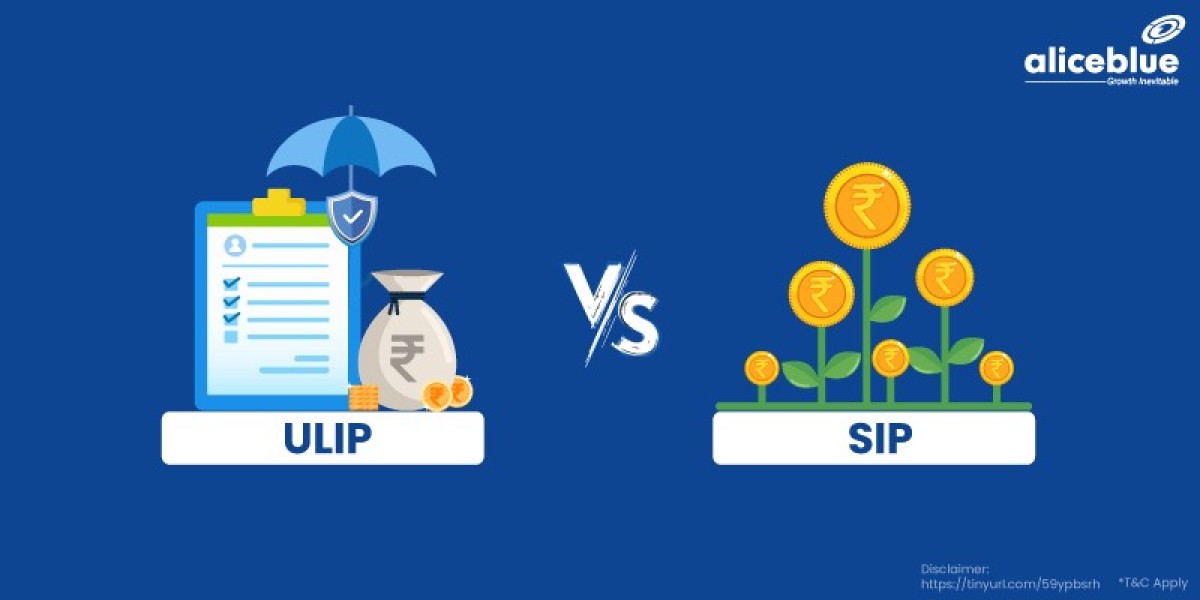When it comes to investing, there are various options available to individuals looking to grow their wealth and achieve their financial goals. Two popular investment options in India are ULIP (Unit Linked Insurance Plan) and SIP (Systematic Investment Plan). Both ULIP vs SIP offer distinct features and benefits. Let's explore the differences between ULIP and SIP to help you make an informed investment decision:
ULIP (Unit Linked Insurance Plan):
ULIP is an investment-cum-insurance product that combines life insurance coverage with investment opportunities. Here's what you need to know about ULIP:
Structure: ULIPs are structured as insurance plans with an investment component. A portion of the premium paid goes towards providing life insurance coverage, while the remaining amount is invested in a variety of investment funds based on your risk appetite.
Investment Options: ULIPs offer a range of investment options such as equity funds, debt funds, balanced funds, and more. You can choose the investment fund(s) that align with your risk profile and investment goals.
Flexibility: ULIPs provide flexibility in terms of switching between investment funds based on market conditions and your investment objectives. You can reallocate your investment among different asset classes as per your changing investment preferences.
Tax Benefits: ULIPs offer tax benefits under Section 80C of the Income Tax Act, allowing you to avail tax deductions on the premium paid. Additionally, the maturity proceeds from ULIPs are tax-free under Section 10(10D) of the Income Tax Act.
SIP (Systematic Investment Plan):
SIP is an investment method that allows you to invest regularly in mutual funds. Here's what you need to know about SIP:
Structure: SIP is a systematic approach to investing in mutual funds. It involves investing a fixed amount at regular intervals (monthly, quarterly, etc.) rather than making a lump-sum investment.
Investment Options: SIP allows you to invest in a wide range of mutual funds based on your investment objectives and risk tolerance. You can choose from equity funds, debt funds, hybrid funds, and more.
Rupee Cost Averaging: SIP utilizes the concept of rupee cost averaging. When the market is down, you purchase more units with the same investment amount, and when the market is up, you purchase fewer units. This strategy helps in mitigating the impact of market volatility.
Flexibility: SIPs offer flexibility in terms of investment amount. You can start with a small amount and gradually increase your investment as per your financial capacity. Additionally, you can stop, pause, or modify your SIP as per your convenience.
Tax Benefits: SIP investments in ELSS (Equity Linked Savings Scheme) mutual funds are eligible for tax deductions under Section 80C of the Income Tax Act, up to a specified limit.
Choosing the Right Investment Option:
The choice between ULIP and SIP depends on your individual needs, goals, and preferences. Consider the following factors when making a decision:
Risk Profile: Assess your risk tolerance and investment horizon. ULIPs may be suitable for individuals seeking insurance coverage along with long-term wealth creation. SIPs can be suitable for investors comfortable with market fluctuations and looking for disciplined investment in mutual funds.
Financial Goals: Clearly define your financial goals, such as retirement planning, children's education, or buying a house. Evaluate which investment option aligns better with your goals in terms of returns, flexibility, and time horizon.
Insurance Coverage: If life insurance coverage is a priority for you, ULIPs can provide the dual benefit of investment and insurance. However, if insurance coverage is not a primary concern, SIPs can offer focused investment opportunities.
Costs and Charges: Understand the charges associated with ULIPs and SIPs, such as premium allocation charges, administration charges, fund management charges, and exit loads. Evaluate the impact of these charges on your investment returns.
Professional Guidance: Seek professional advice from financial advisors or experts who can assess your individual circumstances and help you make an informed decision based on your financial goals and risk tolerance.
In conclusion, both ULIP and SIP offer unique features and benefits. ULIPs provide insurance coverage along with investment opportunities, while SIPs allow for disciplined investment in mutual funds. Assess your individual needs, goals, and risk tolerance to choose the investment option that aligns best with your financial objectives. Remember, regular review and monitoring of your investments are crucial to ensure they remain in line with your changing circumstances.








